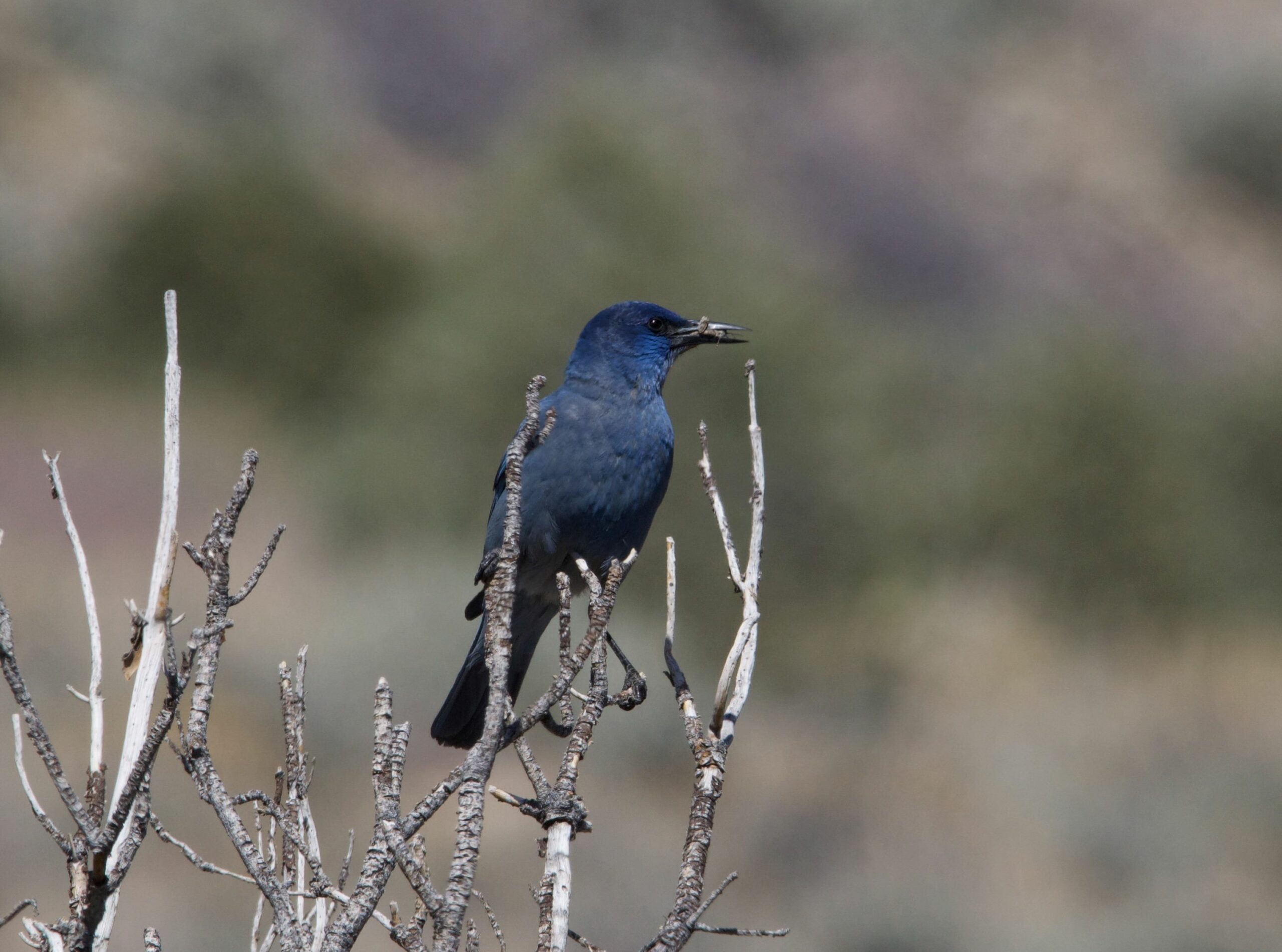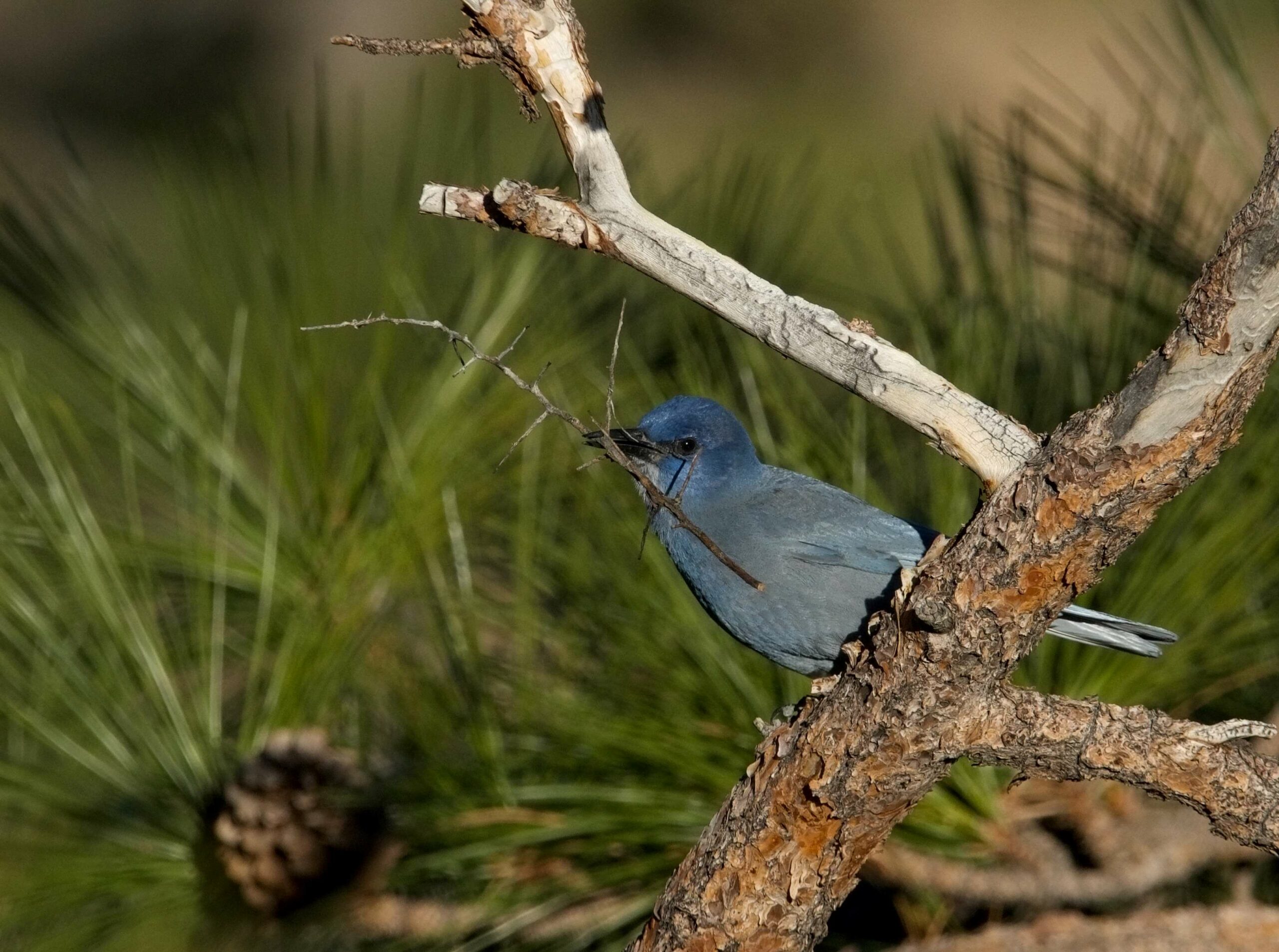Pinyon Jay Community Science Project – 2024 Update
The Pinyon Jay Community Science Project, coordinated by the Great Basin Bird Observatory, is a comprehensive survey of habitats that Pinyon Jays use throughout the year across the western US. The project enlists volunteers as community scientists to monitor habitat usage and document Pinyon Jay behavior. If you are interested but not yet involved, you can learn more, watch a training video, and sign up on CFO’s Pinyon Jay Community Science Project webpage.
Ned Bohman, an outreach biologist with Great Basin Bird Observatory, provided the following update on the project with a focus on Colorado data and he issues a challenge for us all in 2025.

I want to thank all the volunteers from CFO for their hard work and data collecting and to give a brief update on the progress of our program thus far.
First, I thought it would be useful to put all of this volunteering and data gathering into perspective. Thus far, in the life of the program, we have accumulated just shy of 3500 total records, including data from 9 states and over 400 volunteers. There was a total of 1,379 total records submitted to the program in 2023, which means we just about doubled the size of the database last year. Thus far in 2024, we have added 1,231 more records!
In 2024, 10 CFO volunteers submitted 120 records. The vast majority of these records were reports of birds at feeders. In 2023, 20 CFO volunteers submitted a total of 442 records, 228 presence, and 214 absence. In the graph below, you can see a breakdown of the observations from CFO volunteers by behavior type for the year 2023. If you are curious about the geography of data collected in Colorado and across the West, you can always view the map on the project HUB site.

In contrast to the observations from other locations, the majority of reports from CFO volunteers were not of birds flying over. This is great because it tells us information about the habitat and location as it relates to the natural history of Pinyon Jays!
One of the primary goals of this volunteer effort is to link behaviors with specific habitat types and locations. This way we can advise land managers on the importance of different habitat types at different times of year. Armed with this information they can make informed decisions about how to manage habitat and balance other management interests.

The majority of CFO observations were reports of birds at feeders, it is so awesome that so many of you have Pinyon Jays as a yard bird! I encourage feeder watchers to start trying to figure out how the feeders play into the birds’ use of the landscape overall. For example, how often are they coming to your feeder? Where are they coming from and going to? Are birds caching on the property? Do the feeders play more of a role in the bird’s diet in some years than others? Is there a seasonal pattern? All of this information will help us better understand how the birds are using the landscape on a larger scale.
One important (and difficult) thing about researching Pinyon Jays is the scale at which they use the landscape, so your feeders may represent a very small portion of the bird’s home range. Perhaps they are centering their home ranges around areas with many feeders. Perhaps they are adjusting and adapting to less productive Pinyon Pines by increasing their reliance on feeders. Perhaps they are using Pinyon woodlands in areas where volunteers cannot get to them, or have not observed them. Maybe they are using disjunct home ranges and commuting from areas of desirable woodland to feeders. Your data can help us answer questions and fill in data gaps!

In addition to all of the information about feeder use, there were some other interesting observations as well. One observer reported Pinyon Jays flycatching! CFO volunteers also found at least one nesting area. It is worth noting that this is only 1 of less than 5 nesting areas discovered across the whole effort.
When we think about Pinyon Jay nesting season, it is important to point out how sensitive to disturbance Pinyon Jays can be. They will abandon colonies if there is too much disturbance, and too much disturbance can be very minimal from the human perspective. They rely on secrecy to keep their colonies safe. Especially considering the colonial structure of their nests, if a predator were to find one nest, they will quite likely find all of them. Female Pinyon Jays tend to sit on their nests very inconspicuously, only flushing if the nest tree is approached very closely and this can be as little as a meter.
There are certain vocalizations that can indicate potential nesting and these are worth looking out for. Rattles, trills, and whinnies are the most commonly heard and are given by females only and typically in response to their mate. They also make quieter churrs and buzzes that can be heard only from close range. If you hear anything that sounds like this, there is a good chance birds are nesting or at least courting nearby.
Pine Cone Mapping – A New Addition to the Project
Pinyon pine cone mapping has recently been added to the project. We think that tracking the productivity of Pinyon Pine from year to year will be very valuable info. Pinyon pine is a masting species, which means that it produces very different quantities of nuts from year to year. In some years they may produce functionally no pine nuts. In other years, single trees can be covered in hundreds of cones. Because these nuts are the primary food source of Pinyon Jays, we suspect that trends in pine nut productivity could be related to the population decline of the bird.
For those who are already volunteers, you can find the new cone counting protocol and easy-to-use data collection form in your Survey123 app. If you are new to the project and interested in collecting cone data, simply follow the instructions on becoming a data collector. Protocol-specific training will be available in the near future.
Challenge for 2025
Pinyon Jay Community Science data will play a critical role in an upcoming range-wide analysis. GBBO has collaborative plans to use data from the Pinyon Jay Community Science effort, combined with data from other sources, to understand large-scale Pinyon Jay habitat use, trends, and potential causes of declines. This analysis will begin later in 2025, so the more data we can provide the better!
Right now, the project-wide data set contains about 3,800 presence and absence records. We challenge all community scientists to help increase that number to 5,000 by the end of the 2025 breeding season and challenge CFO volunteers, in particular, to double Colorado’s tally from just under 570 records to 1,000.
It’s a big job, but having a large data set will make this analysis much stronger and more authoritative. We’ll keep everyone posted on progress through the project’s HUB website once the breeding season gets underway.
Ned Bohman, Outreach Biologist
Great Basin Bird Observatory, Reno, NV

